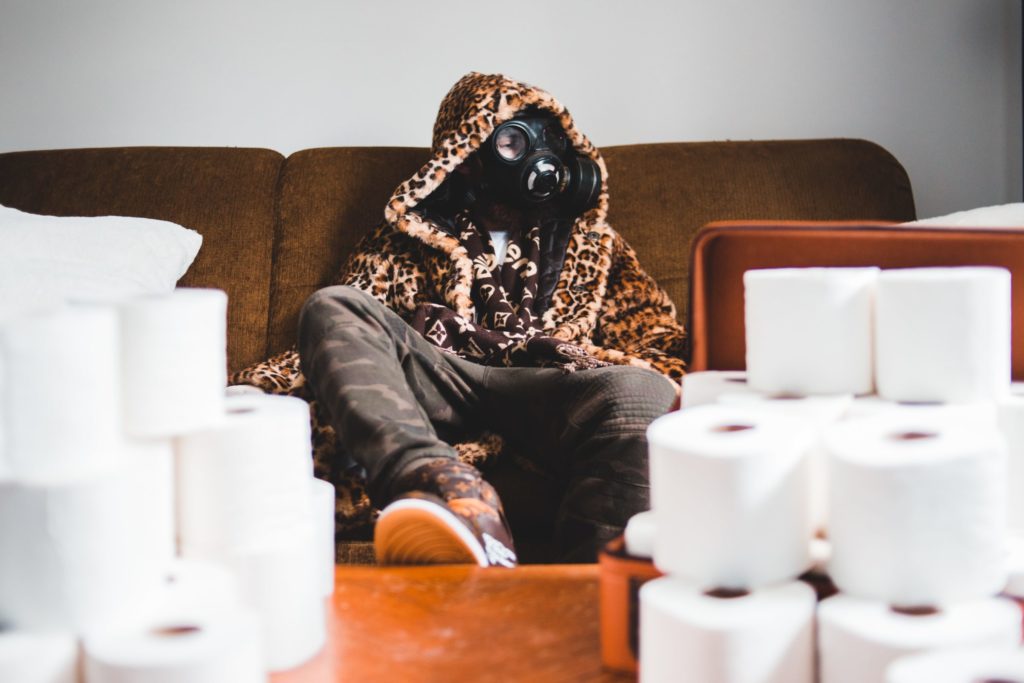COVID-19 risks are not linear. For example: Four people hanging out over dinner is not twice as dangerous as two people having dinner — it’s actually three times as dangerous.
Many of us do our best to forget high school math classes, but understanding how network effects and linear, quadratic, and exponential relationships work can empower you to make better decisions about risks as the world reopens (and too many people take too much risk).
It’s not like once you’ve increased your risk of COVID-19 exposure by going to the grocery store, you may as well throw caution to the wind and start licking telephone poles — most of us understand that our COVID-19 risks are on a spectrum. Even at a crowded event, it’s still important to wear a mask and wash your hands. Even if you’re dining out, it’s better to eat al fresco than inside a dark stuffy restaurant.
There has been less public discussion about how even the spectrums of risk can be confusing. There’s a temptation to think, for example, “maybe going to two events is only twice as bad as going to one?”
But the math doesn’t quite work that way because COVID-19 has nonlinear dynamics.
More: The WHO absolutely did not say those without symptoms can’t spread coronavirus
Some of the risks are quadratic…
Let’s compare three events, all with the same details except for the number of people attending: 10, 50, and 100 people.
When two people talk or even just pass by each other, that’s a “contact pair.” Each contact pairing is an opportunity for COVID to spread. The number of contact pairs between people increases at (roughly) the square of the number of people there. So the number of contact pairs at each event is:
| People | Contact Pairs | Risk compared to 10 people |
|---|---|---|
| 10 | 45 | – |
| 50 | 1225 | 27x |
| 100 | 4950 | 110x |
The current R value for COVID-19 in the United States is around the 1-2 range — meaning, on average, a sick person gets 1-2 other people sick — but that’s a blended average, and a superspreader incident beginning with one person can infect a large number of people all at once.
So not only does the pure number of contact pairs go up, but the chances of a superspreader being in the crowd goes up too. Things can really spiral out of control when there’s a superspreader and higher numbers of contact pairs.
Even if math isn’t your jam, you can see how it’s not as simple as “eight people are four times riskier than two people.”
There’s a limit to quadratic risks like this, but it’s a very high limit. Entire countries have had sudden shifts in their outbreaks due to individual superspreader events, like the Milan football game and the South Korean church, and right now, the Beijing fish market.
So, you’re actually probably better off just having a few friends over for dinner once a week all summer than you are going to a large crowded party even once. And a town as a whole might experience more risk from a single very large event than it would from people quietly visiting in small groups over a period of time. The risk is quadratic, not linear.
… while other risks increase exponentially
Suppose you get COVID-19 and you’re presymptomatic and spreading for a week. During that week — when you’re contagious but before you realize it — you go to some number of events with 10 people each.
The people at those events are probably also going to other events. How many people are implicated in the contact chain in the week after you were contagious but before you realize you had COVID-19?
This number doesn’t increase linearly with the number of events people go to. It increases exponentially. If you and nine of your friends go to just one dinner party but stay home the rest of the time, you’re pretty safe. You’ve all come in contact with nine other people and that’s it.
But if everyone goes to two events, the math changes. Imagine each of the people from your dinner party goes to a second one. At those other dinner parties, the people from your party might come in contact with nine other people. By the time everyone has gone to just two gatherings, there are a hundred people involved.
Ready for some more exponential growth? If everyone at your dinner party then goes to two other dinner parties and the people at those parties are going to other small dinner parties, you suddenly have a thousand people in the chain. You’ve accidentally exposed a thousand people before you even realize you have COVID-19.
So in addition to being better off in smaller groups, you’re much better off being social less frequently, and meeting the same people repeatedly rather than different people every time. If you meet up with different people every week and those people also meet up with other people, the risk of accidental spread becomes huge really quickly.
The bottom line: we have to understand the dynamics
Reopening isn’t an all-or-nothing binary. Once we’re “open,” there are lots of choices we can make to reduce our own risks and those of the people we love. We don’t have a fixed budget of how much “opening” we can do, either. The peculiar math of viral contagion means that some activities, and some ways of doing particular activities, are dramatically more dangerous than others.
As a result, we can “open” a lot more while keeping spread controlled (an R-value under 1) if we understand and use this dynamic. Communities can introduce a lot of low-risk behaviors with less risk than even a small amount of certain high-risk activity.
Read more of our reporting on COVID-19 risks:
- Doctors rank activities by COVID-19 risk
- State of the Pandemic, June 2020, Part I: What we know about SARS-CoV-2
- How to think about your risk factors for severe illness if you get COVID-19
- The CDC’s reopening plan was shelved, but we can still use it
- Fact-checking the CDC’s new guidance: you should still disinfect packages [Updated]

